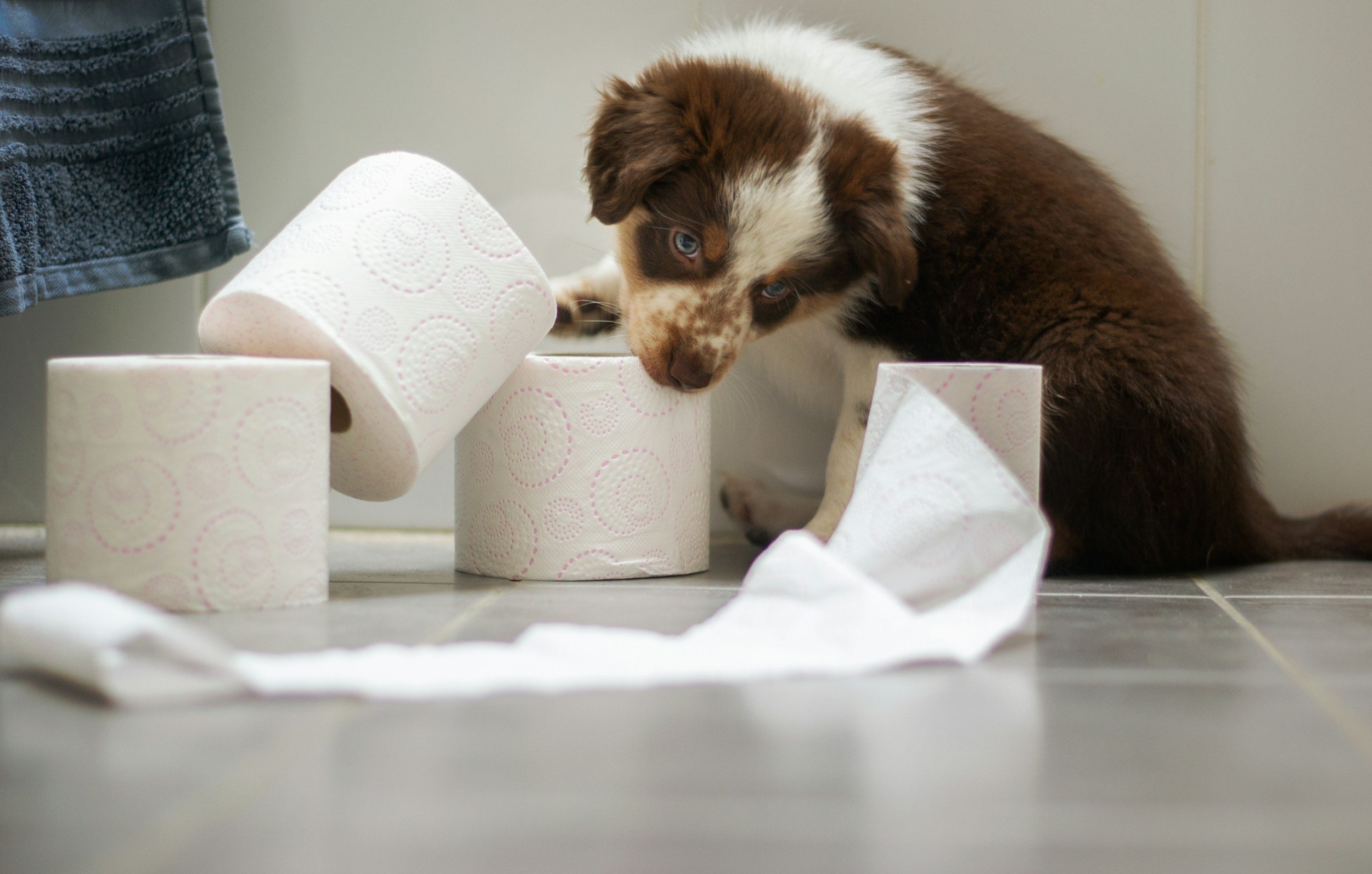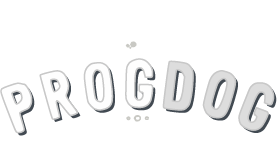
Toilet Training Your Puppy
A Guide on How to Toilet Train Your Puppy
When they need to go, they need to go! Just like toddlers, puppies need help with knowing where to toilet. Unlike toddlers, puppies can learn where to go very quickly and you can have a fully housetrained puppy in no time; sometimes even within a week or so!
Let’s first consider why toileting accidents happen indoors. Puppies have teeny tiny bladders and this makes it hard for them to control because they fill up so quickly. Even larger breeds of dogs have small bladders at first. Their bowels are no different. When nature calls and when they don’t know the human rules of where to toilet, accidents can happen and it is likely you will have a few initially.
The last thing we want to do is tell our puppy off if accidents do happen indoors and we never want to panic them by quickly whipping them up off the floor mid-flow or rubbing their noses in it! This will only teach your puppy that you are unpredictable and a little scary when they need to toilet and this can lead to more issues, such as your puppy finding hiding places to toilet or, at worst, eating it to hide the ‘evidence’. If an accident happens indoors, that’s on us. Just wait and clean it up really well straight after with a good kennel-grade non-ammonia based cleaner.
Never restrict access to water for your puppy in the hope that it means they won’t toilet indoors. Puppies need access to water 24 hours per day because they can dehydrate much more quickly than adult dogs. If you’re following your toilet training schedule, you won’t have a problem.
Toilet training your puppy in a short space of time is easy, but it takes some planning and consistency from you. As a general rule, you want to take your puppy out to their toilet area (usually the garden) when they:
Wake up
Have had a drink
Have eaten
Before, during and after being active or playing with you
Before you leave the house or when you have come home
Before bed time
In my experience, it is a very good idea to keep a diary of your puppy’s toileting habits as this quickly helps you find your puppy’s toileting schedule and it means you can adjust your housetraining plan in line with this. Make sure everyone fills in the diary when they have taken puppy outside so that you all know what’s what.
Another tip for toilet training is to only allow your puppy freedom inside the house if they have been to the toilet first. This means that you reduce the likelihood of them making any mistakes indoors. So before you train, play with or cuddle your puppy, pop them outside first to give them the chance to go. Otherwise, if you are unable to supervise your puppy, a puppy pen is a great way of giving them a secure space inside of the house so that, again, we reduce the likelihood of mistakes happening. Introducing your puppy to a pen the right way, so that they learn to love it is also important and I can help you with that if you book training with me.
Puppy Toilet Training Plan
From day one, start by taking your puppy out to the toilet area every hour. It helps to set an alarm to remind you to do this!
Pop some treats in a puppy-proof treat pot by the back door out of puppy’s reach, so that you can easily grab one or two as you take your puppy out.
Choose the area that you want your puppy to toilet in. This might be your whole garden, or a secure area within the garden.
Go out with your puppy and say your cue for toileting. I use “better go now” with my dog but people say all kinds of things and it doesn’t matter what it is! A cue is handy right from the start because for the rest of the life of your dog, you will have a cue to get them to go whenever you need it.
Now largely ignore your puppy and wait outside with them. As soon as they go, reward them with a treat and tell them how amazing they are!
Because puppy brains are a little in the clouds, puppies can get easily distracted outdoors and sometimes forget to toilet. If you find your puppy doing this, it can be a good idea to pop them on lead before you take them out and wait in one spot in the garden with them until they have been. Then, reward them when they go and unclip the lead as an extra bonus for going to the toilet outside. If you have set up a toileting area for them, pop them in there, wait until they have been, reward them for going and then allow them access to the garden straight after.
Try not to always take them back inside immediately after toileting as this can lead to negative associations of not being allowed to explore. A quick game or sniff around the garden AFTER they have been is a great idea.
Relax your toileting schedule from every hour once you start to notice your puppy’s toileting routine in your diary until you have a puppy who knows exactly where they need to go.
When you know your pup’s night-time toilet routine, set an alarm and take them out just before they usually need to go, whilst gradually extending this time each night to help them hold it for longer.
Watch for the common signs that your puppy might be about to toilet and encourage them outside if you see them:
Sniffing the floor
Circling
Returning to a previously soiled area
Whining
Unable to settle
You will quickly learn your own puppy’s signs that they need to go to the toilet.
Some Common Problems
Puppy goes outside but toilets as soon as they come back indoors
In my experience, this mostly happens for two reasons:
With puppies who are either left outside to their own devices and aren’t being monitored as to whether they have been to the toilet before being allowed back indoors.
With puppies who get so distracted outside doing puppy things that they ‘forget’ to toilet. This is one that fools lots of people as it seems at first that the puppy doesn’t need to go. What people then tend to do is bring their puppy back inside and as soon as they are and the distractions are removed, the puppy then remembers that they needed to go. The best way of dealing with this is to always take your puppy outside to toilet on lead first (or place them in their secure toileting area) and then allow them access to the garden/home as soon as they have been.
Getting your new puppy in summer
It certainly makes taking them outside to the toilet easier (and warmer!) but one problem I find lots with owners is that they leave the back door open for the puppy the entire time. The problem with doing this is that your puppy won’t learn how to let you know they need to go outside and when it comes to winter and you have your door permanently closed, this can cause them issues and confusion. It also means that your puppy is likely to go outside without you there and this means that you will miss the opportunity to reward them for going in the right place.
Puppy pads
Using puppy pads can be useful at times but my experience is that it blurs the lines between the puppy understanding where they are allowed to toilet. Effectively, you are teaching them to toilet indoors by using them. I also find that most puppies end up shredding them rather than using them to toilet! You’re far better off sticking to your toilet training schedule and plan rather than relying on the use of puppy pads.
Inappropriate diets
Feeding late at night or diets with a high salt content (making them drink more) will likely mean that your puppy needs to go more often or at times when it isn’t so great for you. Overfeeding can be a common cause of diarrhoea in puppies and that isn’t pleasant to clean up!
If you notice that your puppy is needing the toilet excessively, it is worth asking a Vet to check for a possible bladder infection which will need treatment immediately.
Toilet training your puppy really is easy as long as you stick to a solid plan and ensure that your house is set up appropriately so that they can get it right!
Happy training and enjoy your puppy, they don’t stay so little for long xx



















